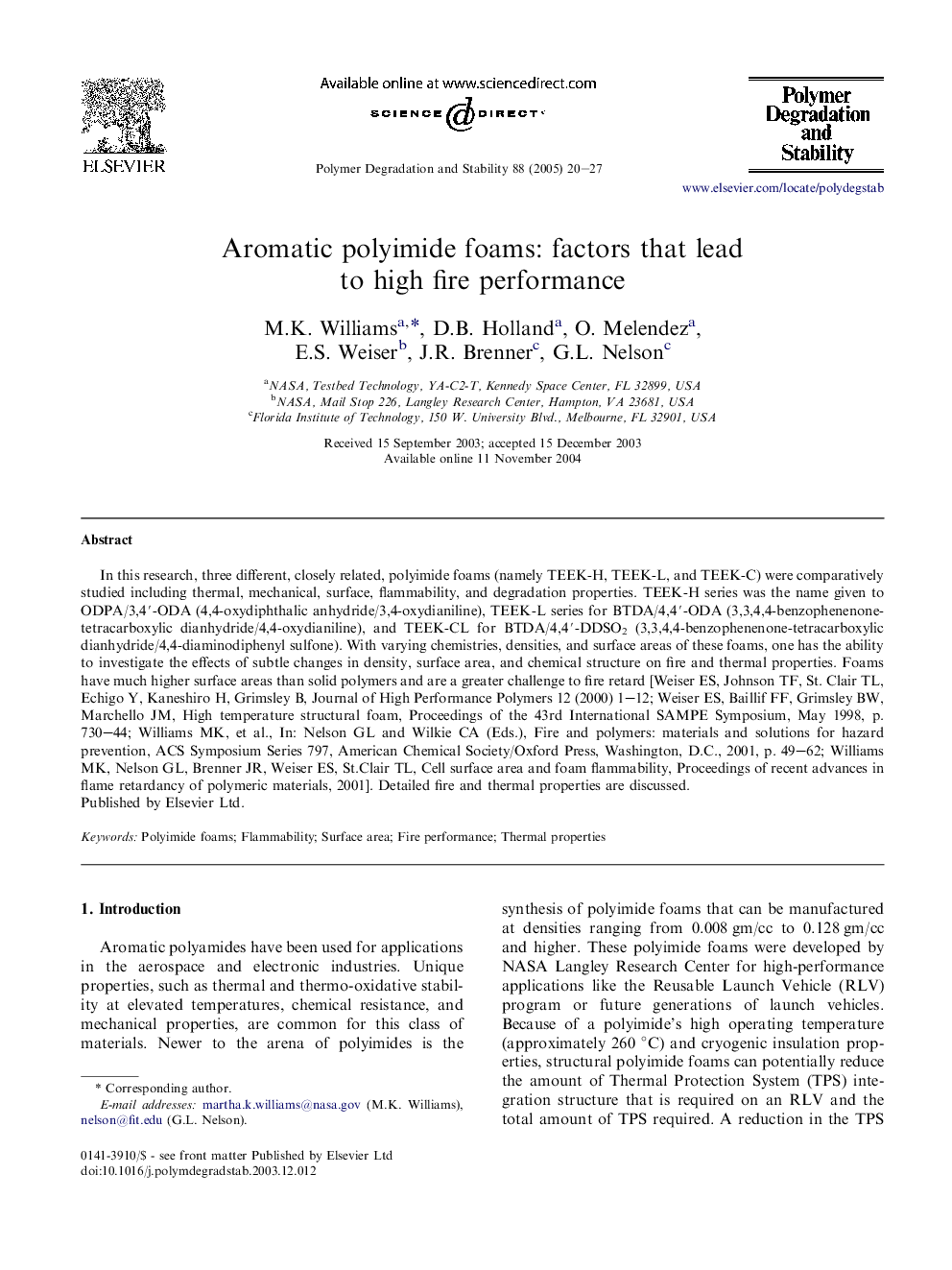| Article ID | Journal | Published Year | Pages | File Type |
|---|---|---|---|---|
| 9560741 | Polymer Degradation and Stability | 2005 | 8 Pages |
Abstract
In this research, three different, closely related, polyimide foams (namely TEEK-H, TEEK-L, and TEEK-C) were comparatively studied including thermal, mechanical, surface, flammability, and degradation properties. TEEK-H series was the name given to ODPA/3,4â²-ODA (4,4-oxydiphthalic anhydride/3,4-oxydianiline), TEEK-L series for BTDA/4,4â²-ODA (3,3,4,4-benzophenenone-tetracarboxylic dianhydride/4,4-oxydianiline), and TEEK-CL for BTDA/4,4â²-DDSO2 (3,3,4,4-benzophenenone-tetracarboxylic dianhydride/4,4-diaminodiphenyl sulfone). With varying chemistries, densities, and surface areas of these foams, one has the ability to investigate the effects of subtle changes in density, surface area, and chemical structure on fire and thermal properties. Foams have much higher surface areas than solid polymers and are a greater challenge to fire retard [Weiser ES, Johnson TF, St. Clair TL, Echigo Y, Kaneshiro H, Grimsley B, Journal of High Performance Polymers 12 (2000) 1-12; Weiser ES, Baillif FF, Grimsley BW, Marchello JM, High temperature structural foam, Proceedings of the 43rd International SAMPE Symposium, May 1998, p. 730-44; Williams MK, et al., In: Nelson GL and Wilkie CA (Eds.), Fire and polymers: materials and solutions for hazard prevention, ACS Symposium Series 797, American Chemical Society/Oxford Press, Washington, D.C., 2001, p. 49-62; Williams MK, Nelson GL, Brenner JR, Weiser ES, St.Clair TL, Cell surface area and foam flammability, Proceedings of recent advances in flame retardancy of polymeric materials, 2001]. Detailed fire and thermal properties are discussed.
Related Topics
Physical Sciences and Engineering
Chemistry
Organic Chemistry
Authors
M.K. Williams, D.B. Holland, O. Melendez, E.S. Weiser, J.R. Brenner, G.L. Nelson,
